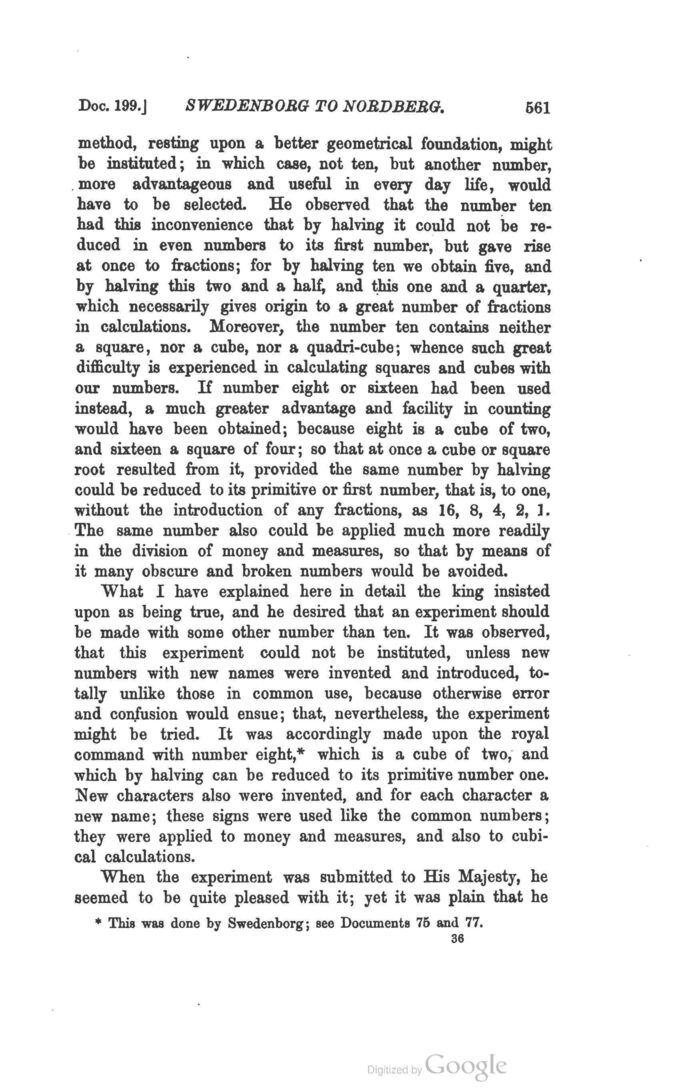
Full resolution (JPEG) - On this page / på denna sida - Sidor ...

<< prev. page << föreg. sida << >> nästa sida >> next page >>
Below is the raw OCR text
from the above scanned image.
Do you see an error? Proofread the page now!
Här nedan syns maskintolkade texten från faksimilbilden ovan.
Ser du något fel? Korrekturläs sidan nu!
This page has never been proofread. / Denna sida har aldrig korrekturlästs.
Doc. 199.) 561
SWEDENBORG TO NORDBERG ,
method, resting upon a better geometrical foundation, might
be instituted ; in which case, not ten, but another number,
more advantageous and useful in every day life, would
have to be selected. He observed that the number ten
had this inconvenience that by halving it could not be re
duced in even numbers to its first number, but gave rise
at once to fractions; for by halving ten we obtain five, and
by halving this two and a half, and this one and a quarter,
which necessarily gives origin to a great number of fractions
in calculations. Moreover, the number ten contains neither
a square, nor a cube, nor a quadri-cube; whence such great
difficulty is experienced in calculating squares and cubes with
our numbers. If number eight or sixteen had been used
instead, a much greater advantage and facility in counting
would have been obtained; because eight is a cube of two,
and sixteen a square of four; so that at once a cube or square
root resulted from it, provided the same number by halving
could be reduced to its primitive or first number, that is, to one,
without the introduction of any fractions, as 16, 8, 4, 2, 1 .
The same number also could be applied much more readily
in the division of money and measures, so that by means of
it many obscure and broken numbers would be avoided.
What I have explained here in detail the king insisted
upon as being true, and he desired that an experiment should
be made with some other number than ten. It was observed,
that this experiment could not be instituted, unless new
numbers with new names were invented and introduced, to
tally unlike those in common use, because otherwise error
and confusion would ensue ; that, nevertheless, the experiment
might be tried. It was accordingly made upon the royal
command with number eight,* which is a cube of two, and
which by halving can be reduced to its primitive number one.
New characters also were invented, and for each character a
new name ; these signs were used like the common numbers ;
they were applied to money and measures, and also to cubi
cal calculations.
When the experiment was submitted to His Majesty, he
seemed to be quite pleased with it ; yet it was plain that he
* This was done by Swedenborg ; see Documents 75 and 77.
<< prev. page << föreg. sida << >> nästa sida >> next page >>